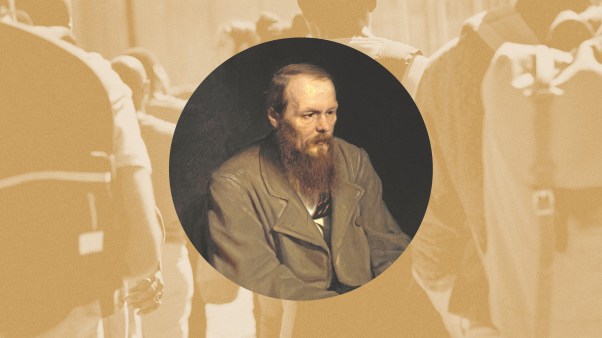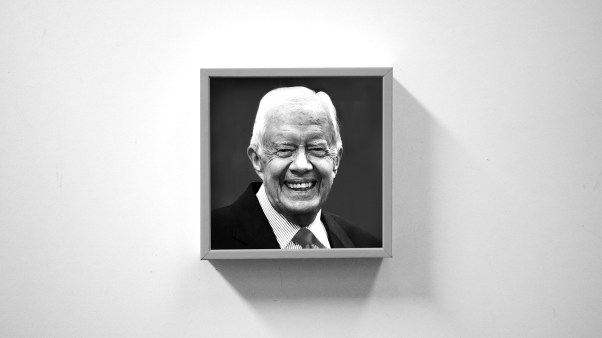Much confusion resulted from (and contributed to) last week’s quick overview of a variety of Communion practices. Here’s more information on Catholic and Orthodox traditions, as well as other reader feedback.
Roman Catholic Policy
from The Documents of Vatican II (Walter M. Abbott, S.J., general editor)
Constitution on the Sacred Liturgy, II.55:
Hearty endorsement is given to that closer form of participation in the Mass whereby the faithful, after the priest’s communion, receive the Lord’s body under elements consecrated at that very sacrifice.
The dogmatic principles which were laid down by the Council of Trent remaining intact,* communion under both kinds may be granted when the bishops think fit, not only to clerics and religious, but also to the laity, in cases to be determined by the Apostolic See, as, for instance, to the newly ordained in the Mass of their sacred ordination, to the newly professed in the Mass of their religious profession, and to the newly baptized in a Mass following their baptism.**
* Council of Trent, Session 21, July 16, 1562, c.1-3
Doctrine on Communion under Both Species:
CANON I.—If any one saith, that, by the precept of God, or, by necessity of salvation, all and each of the faithful of Christ ought to receive both species of the most holy sacrament not consecrating; let him be anathema.
CANON 11.—If any one saith, that the holy Catholic Church was not induced, by just causes and reasons, to communicate, under the species of bread only, laymen, and also clerics when not consecrating; let him be be anathema.
CANON III.—If any one denieth, that Christ whole and entire—the fountain and author of all graces—is received under the one species of bread; because that—as some falsely assert—He is not received, according to the institution of Christ himself, under both species; let him be anathema.
** Communion “under both kinds” (or “under both species”) is recognized. While the reason is not specified, it is plainly because Communion in this form is a fuller expression of the Eucharistic symbolism (Christ did order the apostles both to eat and drink). For reasons of convenience, however, this ancient practice is now permitted only during events of special solemnity. At all Masses, however, this is urged that the faithful receive a Host consecrated at that Mass. This had previously been urged in Mediator Dei and in the Liturgical Instruction of 1958, but was seldom put into practice.
Practice
After Vatican II, many Catholic churches began distributing both bread & wine. The wine is contained in communal chalices that the worshippers sip from. Still other Catholic churches “dunk” the host into the wine before giving it to the worshipper.Louis Marchiony Jr.
In Latin rite churches … the bread species only is offered to the faithful in very large gatherings for the sake of expedience and to avoid the possibility of spilling the Precious Blood (species of wine). In my diocese, the Bishop encourages the administration of both species as often as possible and practical. In my experience, every parish I have ever visited or attended regularly offers both body and blood at every Sunday Mass. At daily (weekdays) Mass, about half of these parishes offer the bread species only. That practice is different in other countries, because the specifics are under the authority of the Ordinary (Bishop) of the diocese.LByrd555, via e-mail
See also: http://www.catholic-pages.com/dir/eucharist.asp
Orthodox Policy
from The Orthodox Faith, Vol. ii: Worship (Department of Religious Education, The Orthodox Church in America)
Communion
After the Our Father, the children of God receive Holy Communion. The celebrant again offers the Peace of Christ to the people, and with bowed heads they pray together for their worthy participation in Holy Communion. The celebrant prays that Christ Himself would come to distribute His Body and Blood.
Attend O Lord Jesus Christ our God, out of Thy holy dwelling place, from the throne of the glory of Thy kingdom, and come to sanctify us, O Thou who sittest on high with the Father and art here invisibly present with us, and by Thy mighty hand impart unto us Thy most pure Body and precious Blood, and through us to all of the people.
The consecrated Lamb is they elevated with the proclamation: Holy Things are for the holy! The people respond: One is Holy! One is the Lord Jesus Christ! To the glory of God the Father, Amen. The celebrant then breaks the Lamb into four pieces according to the way it was cut at the prothesis. One piece of the sanctified bread is put into the chalice together with a cup of hot water which symbolizes the living character of the Risen Christ whose body and soul are reunited and filled with the Holy Spirit in the glorified life of the Kingdom of God.
The clergy then receive Holy Communion from the bread, and drink from the consecrated cup. While the clergy participate in the Holy Mysteries, the people sing a special communion verse which changes according to the celebration. They may sing other hymns proper to the season as well, especially if the communion of the clergy takes a long time.
The faithful people receive Holy Communion on a spoon. They are given both the consecrated bread, and the sanctified wine. The communion of the faithful is always from the gifts offered and sanctified at the given Divine Liturgy. Holy Communion is never taken from any “reserve.” As we have mentioned, all who are members of the Church through the sacraments of baptism and chrismation, including small children and infants, may partake of Holy Communion.. . .
Following Holy Communion in some churches it is the custom of the people to take some bread and wine. This helps them to receive the holy gifts, and to have something more to eat since they have been fasting.
Practice
The center cut piece of consecrated bread (called “the Lamb”), goes into the chalice along with both wine and water, not water alone. And certainly not as much as a cup of water. Also, the altar bread that is offered to all people after the Holy Communion is known as *antidoron* and it is NOT consecrated. This is a sign of love and friendship for all people, and a blessing for those who receive it in faith. The divine, holy, immortal, and life-giving Mysteries of Christ are received only by baptised Orthodox Christians who are properly prepared. In some traditions un-consecrated wine is also offered to *the communicants* after the Holy Mysteries, in order to “wash down” and clear all traces of the elements from one’s mouth.Luke Padgett
On the altar at the time of consecration is a small plate that has a base that allows it be elevated a few inches. This is called the “paten” or “discos” (the Greek word for plate). On the discos is a cube-shaped piece of bread called the “Lamb” which has been cut out of a larger loaf. There are smaller pieces of bread that have been also cut out of either the same loaf (in the Greek tradition) or from several smaller loaves (the Slavic tradition). These smaller pieces are offered in rememberance of the hierarchy, the Virgin Mary, St. John the Baptist, and the other saints – and prayer requests – both for the living and departed. It is only the Lamb, however, which is officially consecrated.
The priest cuts a small piece of the Lamb as Communion for himself and any other clergy. He and the other clergy would eat the bread from his hands.
The remainder of the Lamb is cut into small pieces and placed in the chalice with the wine. The priest would give, with a spoon, each person who comes to Communion a small piece of the consecrated bread mixed with the wine.
At the end of the service, the bread from which the Lamb and the other commemorative were cut – the bread which is leftover – is distributed among the people as they are leaving the church – usually coming forward to venerate a cross being held by the priest at the front of the church. This bread is not considered consecrated – it is called, in fact, “antidoron” — the Greek word which means “instead of the gift” (that which was consecrated).
I hope this was not too complicated. The main point was that Orthodox people receive both bread and wine on a spoon from the chalice.In Christ, Rev. John ShimchickOther Notes
Just to make it even more confusing, Evangelical Friends (Quakers) do not practice consuming communion elements (Bread and Wine) at all. They believe communion (and other sacraments) are spiritual figures or types only.Timothy FriendFor Lutheran practices other than those at the Web site previously mentioned, see www.wels.net and www.lcms.org
I have been a Christian and Missionary Alliance pastor for 20 years serving three churches. I have also served as a child evangelist doing Gospel Magic programs in every conceivable denomination in the USA and Canada. What is not taught to our children in evangelical the church about communion has given us a great multitude of ignorant adults!
One senior pastor told me once he really dreaded communion Sunday because it was so boring and the preaching material was sparse!
Holy Communion Sunday has brought various reactions:
Some adults skip communion planned absence so they will not “be guilty of the body and blood of Christ partaking unworthy.”
Some adults lean over and tell their mates don’t partake of communion because you have been real bad this week! I have seen and heard parents tell their teens you can’t take communion because you room is not clean!
And the real clincher when communion is celebrated on the first Sunday of the month and people know it is coming – they fail to prepare to meet with the Lord at His table.
What is the value of part taking of the Eucharist? I have seen people healed of various physical diseases, broken relationships restored, the power of demons broken and the presence of the Lord bring people to repentance and forgiveness. There is an unbroken testimony of the grace that God’s saints have benefited from daily communion.Peace, Rev. Joseph Broz, III Chester, PAAs an Orthodox Christian who originally came to Christ through the Evangelical movement, I appreciate your treatment of this topic. One thing that always struck me as significant in the typical Protestant Lord’s Supper was the individual cups and elements, rather than the one common cup. The Lord’s Supper points to the reality that each individual with his/her Bible is the sole guardian and interpreter of his/her faith in the typical Protestant church, rather than being in communion with one another in a common faith in Him whose Body and Blood were broken and shed for us. As long as devotion to individualism as a supplemental credo is perpetuated, real unity cannot be achieved.
Thank you again for your efforts towards real unity!In Christ, Patrick WilkesElesha Coffman is former managing editor for Christian History & Biography.
Prior issues are available for purchase in the Christian History Store.
We’d like to know what you think about this article. Please send your response to history@christianitytoday.com.
Copyright © 2001 by the author or Christianity Today/Christian History magazine.Click here for reprint information on Christian History.








